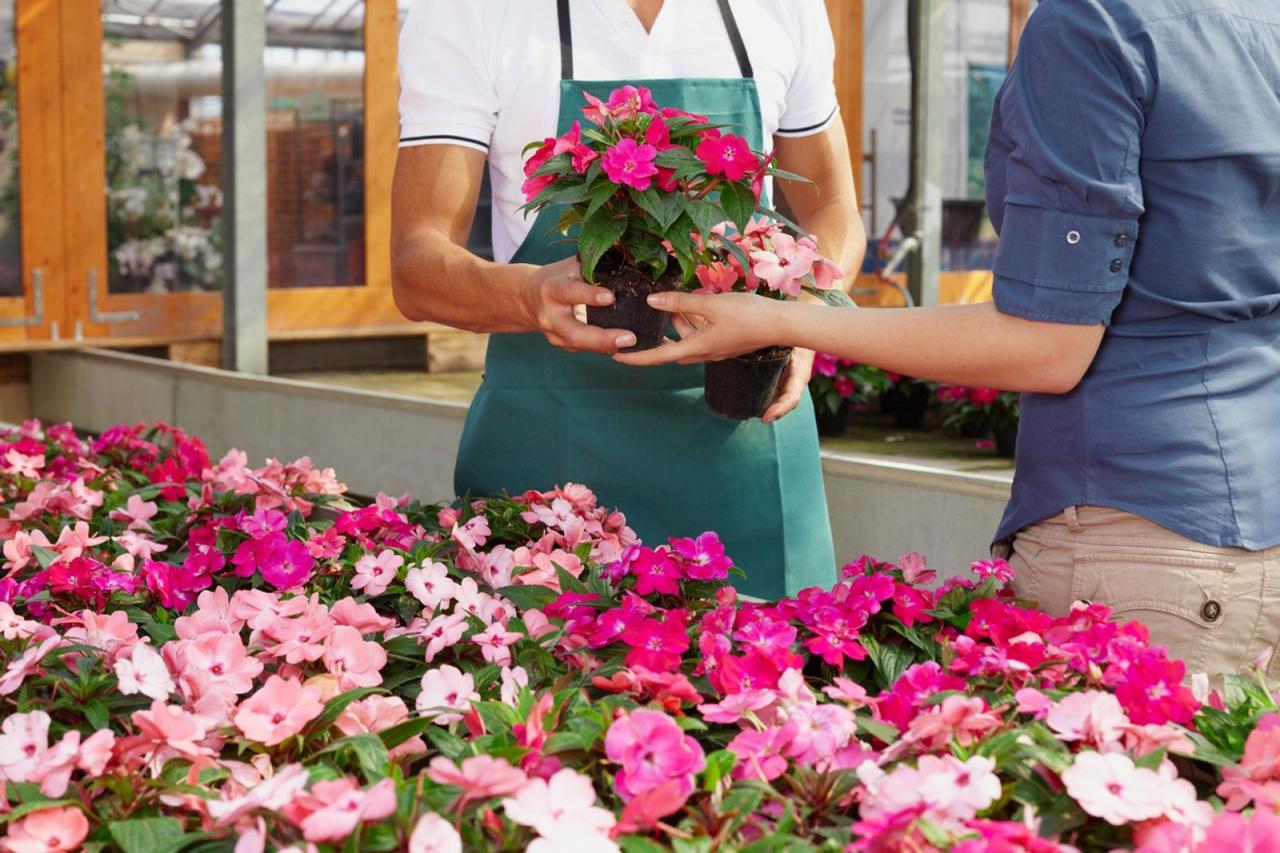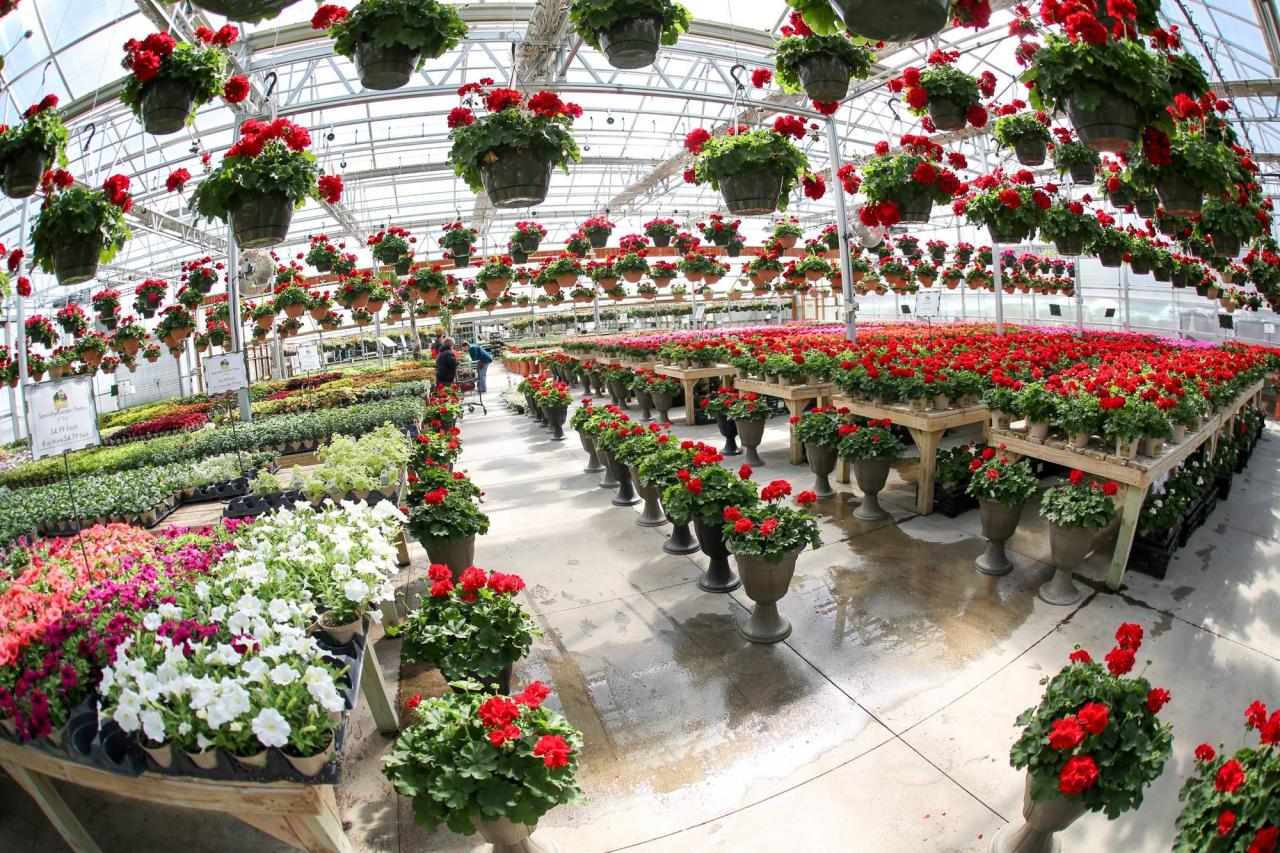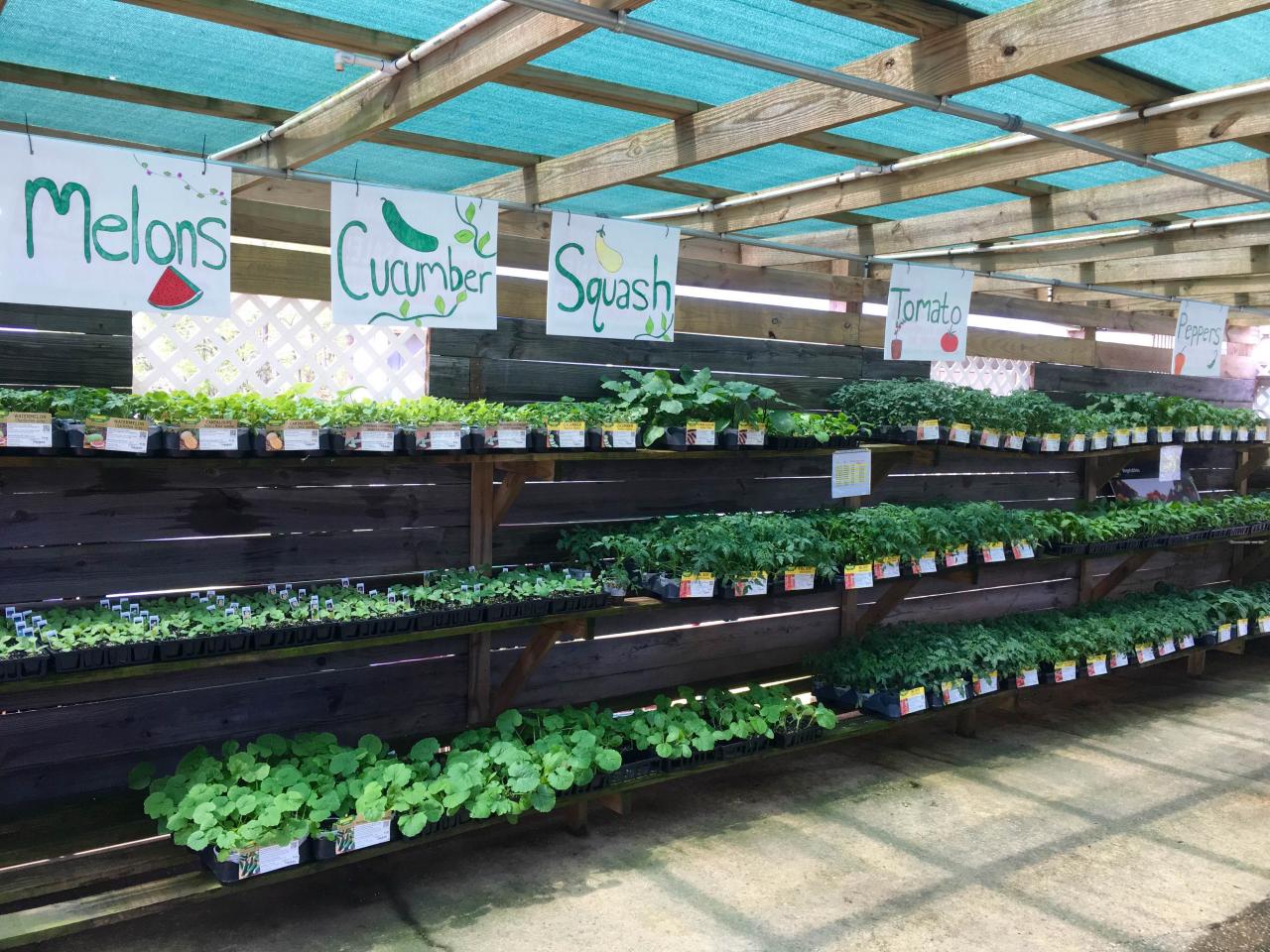Homegrown Garden Centre: Imagine a haven where locally sourced plants thrive, community blossoms, and sustainability takes root. This isn’t your typical big-box garden store; it’s a unique business model focused on connecting with local growers, offering personalized service, and fostering a sense of community around the love of gardening. From carefully curated plant selections to engaging workshops, the homegrown garden centre offers a refreshing alternative, appealing to environmentally conscious consumers and those seeking a more personal gardening experience.
This model prioritizes sustainable practices, supporting local economies, and building strong relationships with customers. By focusing on quality over quantity, these centers curate a selection of plants, tools, and accessories that cater to specific regional needs and preferences. This hyper-local approach not only benefits the environment but also creates a strong sense of community, transforming the simple act of gardening into a shared experience.
Defining “Homegrown Garden Centre”
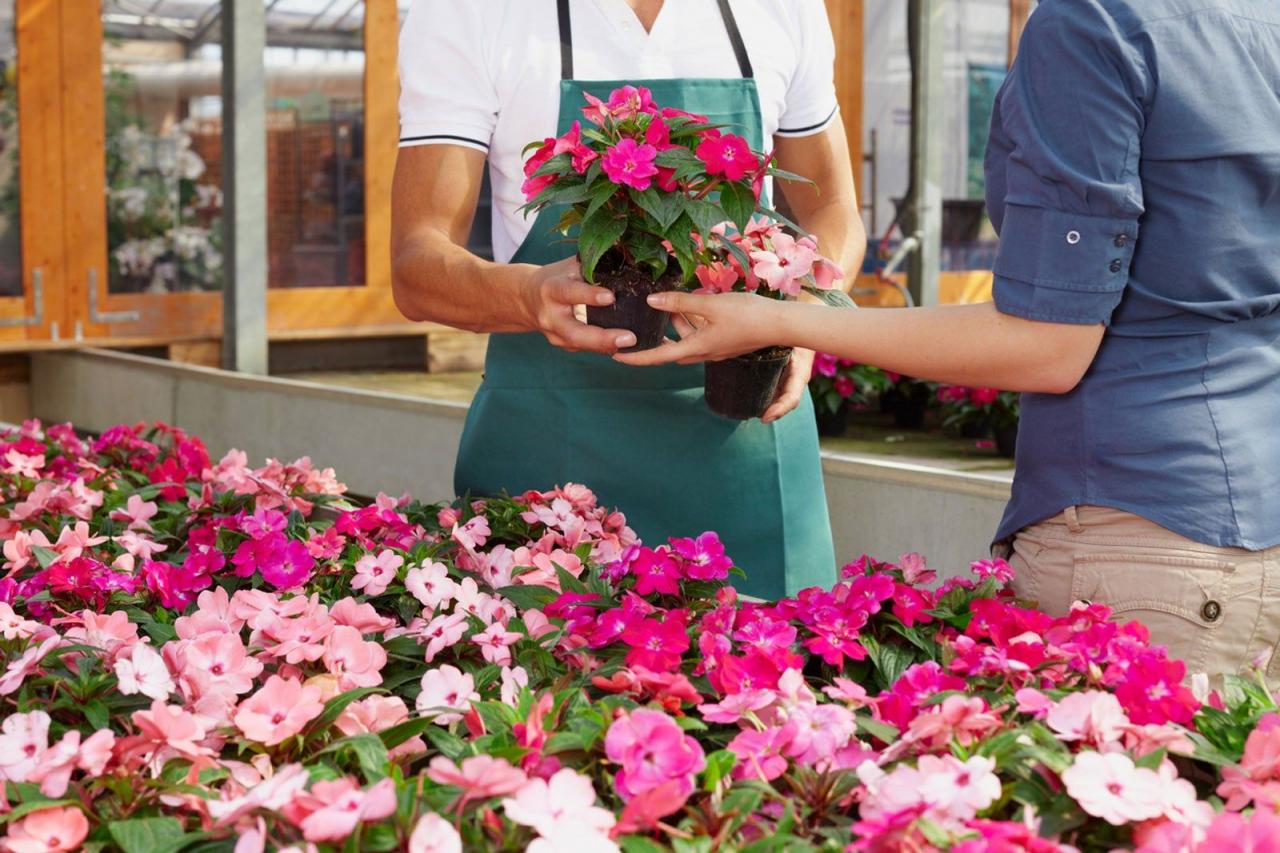
The term “homegrown garden centre” evokes a sense of community, local sourcing, and personalized service, a stark contrast to the large, often impersonal, commercial garden centres dominating the market. It represents a shift towards a more sustainable and deeply connected approach to gardening, emphasizing local produce and a strong relationship with the customer. This isn’t just a place to buy plants; it’s a hub for local gardeners, a source of expert advice tailored to the specific needs of the region, and a celebration of homegrown horticultural excellence.A homegrown garden centre prioritizes locally sourced plants and products, fostering a sense of community and supporting local growers.
Unlike large commercial operations, which often source plants from vast, centralized nurseries, a homegrown centre champions regional biodiversity and adapts its offerings to the unique climate and soil conditions of its immediate area. This approach leads to plants better suited to local environments, requiring less maintenance and resulting in healthier gardens.
Product and Service Offerings of a Homegrown Garden Centre
A homegrown garden centre typically offers a curated selection of plants, seeds, and gardening supplies tailored to the local climate and gardening preferences. This might include regionally adapted flower varieties, vegetable seedlings suited to the local growing season, and unique herbs and shrubs not typically found in larger chains. Services could range from personalized gardening consultations and workshops on local gardening techniques to composting advice and soil testing.
They might also offer potting services, plant delivery within a certain radius, and even seasonal events like plant swaps or gardening workshops. Imagine a charming space filled with the fragrant scent of herbs, displaying vibrant, locally grown flowers and showcasing handcrafted gardening tools made by local artisans.
Distinguishing Characteristics of a Homegrown Garden Centre
Several key characteristics set homegrown garden centres apart. Firstly, their commitment to local sourcing is paramount. They actively partner with local growers, fostering sustainable practices and reducing their carbon footprint. Secondly, personalized service is key; knowledgeable staff offer tailored advice based on local conditions and individual gardening needs. Thirdly, a focus on community engagement through workshops, events, and a welcoming atmosphere builds strong customer loyalty.
Lastly, a homegrown centre often reflects the unique character of its location, offering plants and products that resonate with the local environment and culture. Think of it as a neighborhood gathering place, as much as a retail outlet.
Logo Design for a Hypothetical Homegrown Garden Centre
A simple, yet evocative logo could feature a stylized leaf or flower, perhaps incorporating elements representative of the local flora. The colour palette could consist of earthy tones, such as greens and browns, to convey a sense of nature and sustainability. The font should be clean and readable, reflecting a sense of approachability and trust. For instance, a simple, hand-drawn leaf Artikel, with a circular frame containing the name of the centre in a friendly, slightly rustic typeface, would effectively communicate the essence of a homegrown garden centre.
The overall impression should be one of warmth, approachability, and a deep connection to the local community and environment.
Target Audience and Marketing
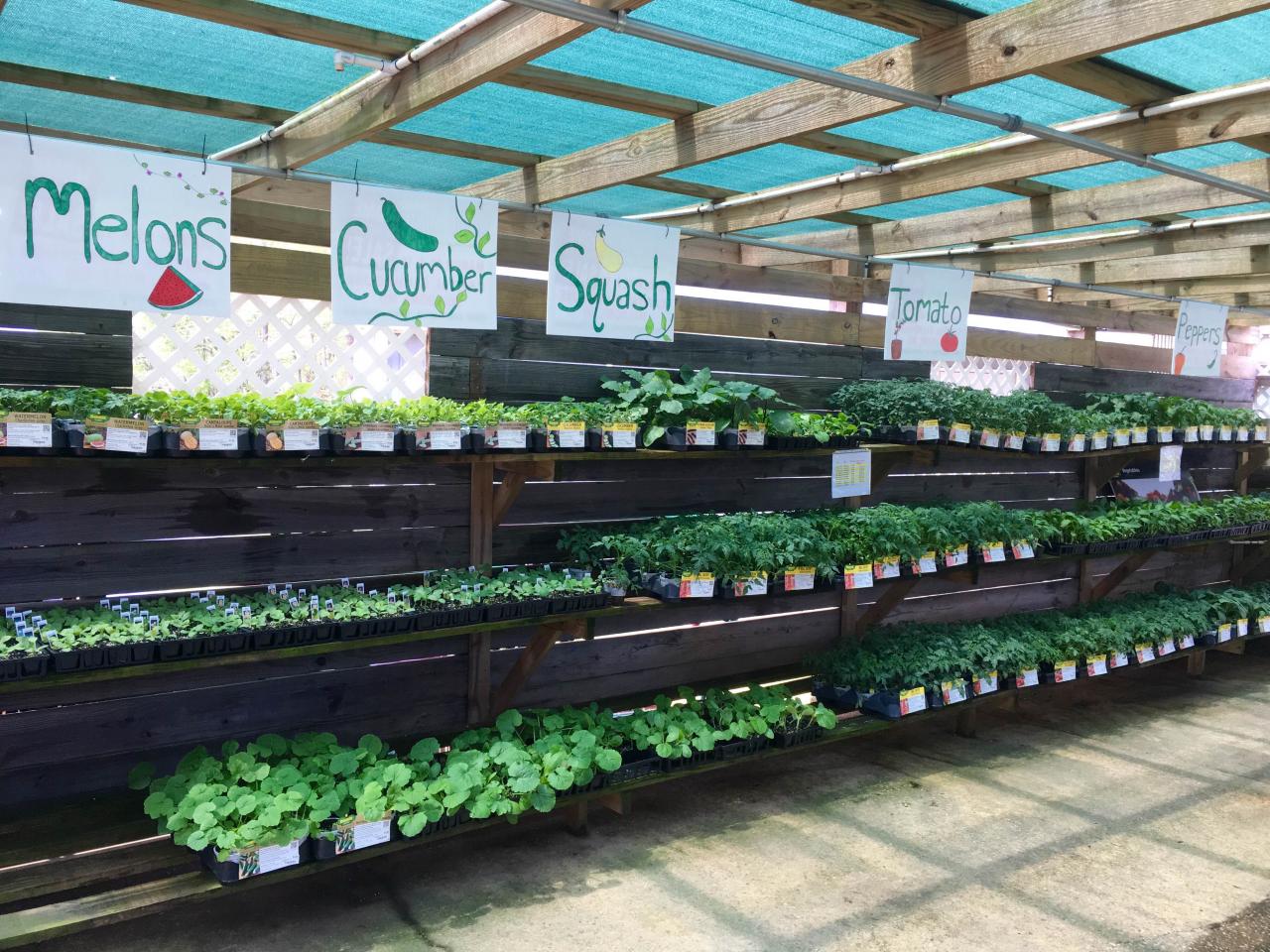
Successfully marketing a homegrown garden centre hinges on understanding and reaching the right customers. A targeted approach maximizes impact and minimizes wasted resources, ensuring your message resonates with those most likely to become loyal patrons. This section delves into identifying the ideal customer profile and crafting effective marketing strategies to attract them.
The ideal customer profile for a homegrown garden centre is multifaceted, encompassing a diverse range of individuals united by a shared passion for gardening and locally sourced products. This isn’t limited to experienced gardeners; it includes beginners eager to learn, families seeking outdoor activities, and environmentally conscious consumers prioritizing sustainability.
Dreaming of a thriving homegrown garden centre? Choosing the right tools is key, and that’s where upgrading your equipment comes in. For top-tier power tools to make your gardening dreams a reality, check out the innovative range available at bosch home garden. With the right tools, your homegrown garden centre will flourish, bringing you closer to nature’s bounty.
Ideal Customer Profile
Our target audience includes several key segments: Experienced Gardeners seeking high-quality, unique plants and expert advice; Beginner Gardeners looking for easy-to-grow options and educational resources; Families wanting engaging activities and family-friendly plants; and Environmentally Conscious Consumers prioritizing organic and locally sourced products.
Homegrown garden centres are booming, offering a fantastic range of plants and expert advice. But sometimes, the best gardening journey starts with a personal touch, like nurturing your own space; check out this inspiring guide on my home garden for ideas. Ultimately, whether you source from a centre or cultivate your own, the joy of gardening remains the same.
Marketing Strategies
Marketing strategies must cater to each segment’s specific needs and preferences. A multi-channel approach is crucial for optimal reach and engagement. This involves utilizing both online and offline channels to create a cohesive and impactful marketing campaign.
| Marketing Channel | Target Audience | Effectiveness | Example |
|---|---|---|---|
| Social Media (Instagram, Facebook) | All segments, especially beginners and families | High – visually engaging, allows for direct interaction | Visually appealing posts showcasing new plants, gardening tips, and customer testimonials. |
| Local Partnerships (farmers markets, community events) | All segments, particularly environmentally conscious consumers | Medium-High – builds community trust and brand awareness | Participating in local farmers’ markets, sponsoring community gardening workshops. |
| Email Marketing | All segments, especially experienced gardeners | Medium – allows for targeted messaging and promotions | Newsletters featuring new arrivals, gardening tips, and exclusive offers. |
| Website with Online Store | All segments | High – provides 24/7 accessibility and detailed product information | A user-friendly website with high-quality product photography, detailed descriptions, and secure online ordering. |
Benefits of a Strong Online Presence
In today’s digital landscape, a robust online presence is paramount for any business, including a homegrown garden centre. A well-designed website and active social media engagement significantly enhance brand visibility, customer reach, and overall business success. It provides a platform for showcasing products, offering educational resources, building community, and driving sales.
Sample Social Media Post
Imagine a vibrant Instagram post featuring a close-up image of a lush, healthy tomato plant laden with ripe red tomatoes. The caption reads: “🍅 Locally grown heirloom tomatoes are here! Stop by this weekend and pick up some of nature’s sweetest treats. Limited quantities available. #homegrown #heirloomtomatoes #supportlocal #gardening #freshfromthefarm”
Sourcing and Sustainability
For a truly homegrown garden centre, sourcing practices are paramount. It’s not just about selling plants; it’s about fostering a connection with the local environment and promoting sustainable gardening practices. This involves careful consideration of where plants and materials originate, how they’re grown, and their overall impact on the ecosystem. Our commitment to sustainability isn’t just a marketing ploy; it’s integral to our identity.Our sourcing process prioritizes local growers and suppliers whenever possible.
We build strong relationships with nearby nurseries and farms, ensuring the plants we offer are well-suited to our region’s climate and soil conditions. This minimizes transportation distances, reducing carbon emissions and supporting our local economy. We also carefully vet our suppliers, seeking those who employ environmentally responsible cultivation methods, such as integrated pest management and water conservation techniques. For materials like pots and compost, we actively seek out recycled and biodegradable options, minimizing waste and promoting a circular economy.
Locally Sourced vs. Commercially Sourced Products
Locally sourced products offer several key advantages. They often boast superior quality due to reduced transportation time and stress on the plants. The shorter supply chain reduces the carbon footprint associated with shipping and handling. Moreover, supporting local growers boosts the local economy and strengthens community ties. However, relying solely on local sources can limit product variety and potentially increase prices, especially during certain seasons.
Commercially sourced products, on the other hand, offer greater variety and potentially lower costs, but often come with a higher environmental impact due to longer transportation distances and potentially less sustainable growing practices. Finding the right balance between local and commercial sourcing is crucial for a sustainable and successful business model. A good strategy often involves a mix of both, prioritizing local options whenever feasible while supplementing with commercially sourced products to fill gaps in availability or diversity.
Environmentally Friendly Gardening Practices
Promoting environmentally friendly gardening is a core value of our centre. We actively educate our customers on sustainable practices through workshops, signage, and informative handouts.We emphasize the importance of:
- Using organic fertilizers and pest control methods to avoid harmful chemicals.
- Implementing water-wise irrigation techniques, such as drip irrigation or rainwater harvesting.
- Choosing native plants that are adapted to the local climate and require less water and maintenance.
- Composting organic waste to reduce landfill waste and create nutrient-rich soil.
- Reducing plastic use by offering alternatives like biodegradable pots and reusable containers.
Reducing Environmental Footprint
Our commitment to reducing our environmental footprint extends beyond our sourcing practices. We strive to minimize waste through efficient packaging, recycling programs, and energy-efficient lighting and heating systems in our centre. We also offset our unavoidable carbon emissions through investments in carbon-neutral initiatives. For example, we partner with a local reforestation project to plant trees, absorbing carbon dioxide from the atmosphere.
This commitment is reflected in our operational choices, from the eco-friendly cleaning products we use to the sustainable materials we employ in our building and renovations. By integrating sustainable practices into every aspect of our business, we aim to be a model for environmentally responsible commerce within the gardening industry.
Product Selection and Pricing: Homegrown Garden Centre
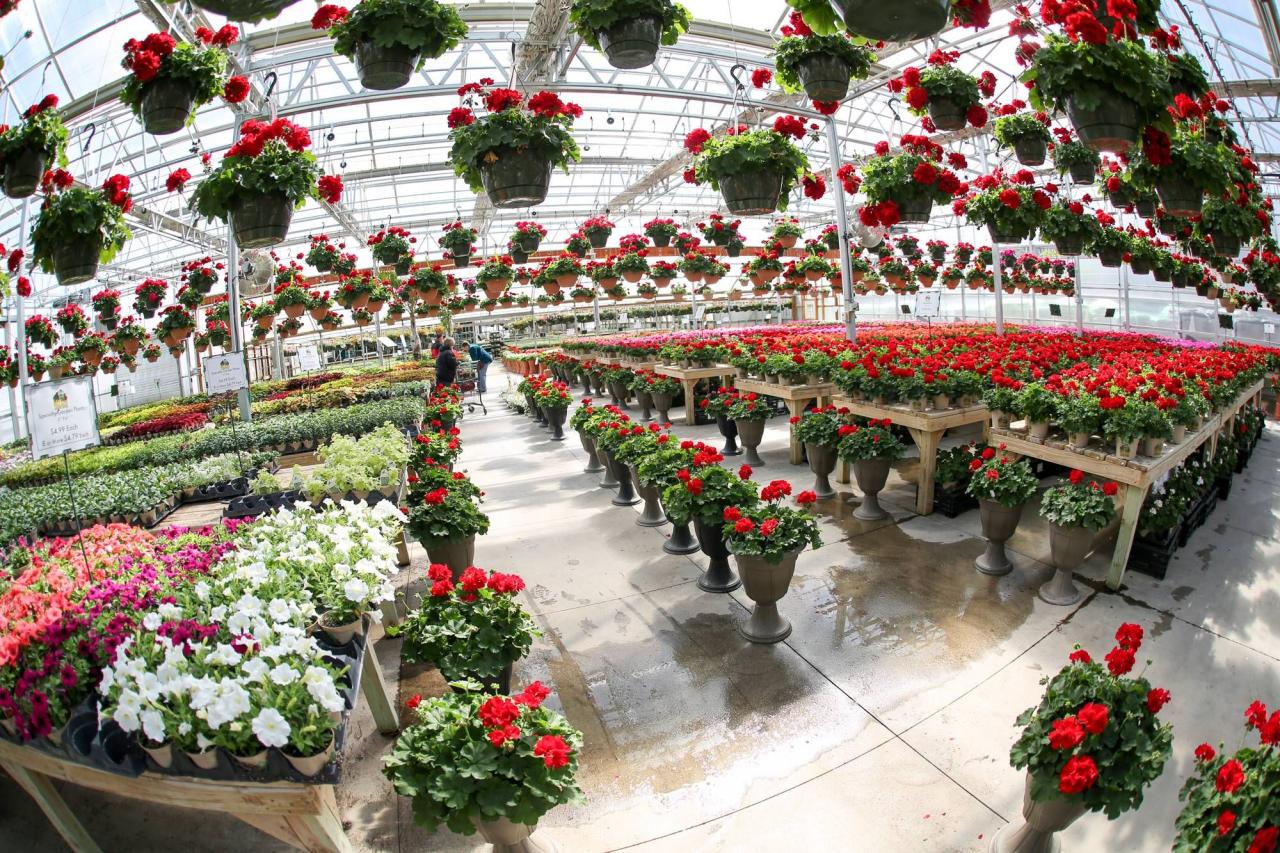
Building a thriving homegrown garden center requires a strategic approach to product selection and pricing. The right mix of products, attractively priced, will attract customers and ensure profitability. Careful consideration of both aspects is crucial for success.
Sample Product Catalog
A successful homegrown garden center needs a diverse range of products to cater to different customer needs and preferences. This sample catalog showcases a selection that balances popular items with unique offerings:
- Plants: Herbs (basil, mint, rosemary, thyme), vegetables (tomatoes, peppers, lettuce, zucchini), flowers (sunflowers, zinnias, marigolds, petunias), and a selection of native plants suited to the local climate. Consider offering both seedlings and mature plants. Variety is key to attracting a broad customer base.
- Seeds: A wide array of vegetable, flower, and herb seeds, packaged in attractive, clearly labeled packets. Offer both heirloom varieties and popular hybrids. Consider offering seed starting kits with all the necessary components for beginners.
- Tools: Hand trowels, hand rakes, watering cans, garden gloves, secateurs, small hand forks, and basic gardening tools suitable for both experienced and novice gardeners. Prioritize quality and durability to encourage repeat purchases.
- Accessories: Potting mix, fertilizers, pest control solutions (organic options are highly desirable), decorative pots and planters in various sizes and styles, trellises, plant markers, and gardening books or guides. These add-ons increase the average transaction value.
Factors Influencing Pricing Strategies
Several factors determine the pricing strategy for a homegrown garden center. These include:
- Cost of Goods: This includes the cost of seeds, plants, tools, and other materials, as well as labor costs involved in growing, propagating, and preparing products for sale. Accurate cost tracking is essential.
- Market Competition: Researching competitor pricing is vital to ensure competitiveness. Consider offering unique products or superior service to justify potentially higher prices.
- Target Market: Pricing should align with the target market’s perceived value and willingness to pay. A high-end clientele might accept premium prices, while a budget-conscious market requires competitive pricing.
- Seasonal Demand: Prices can fluctuate depending on seasonal demand. Popular items during peak seasons may command higher prices, while less popular items might be discounted to encourage sales.
Pricing Models and Applicability
Different pricing models can be employed, each with its own advantages and disadvantages.
- Cost-Plus Pricing: This involves calculating the cost of goods and adding a fixed markup percentage to determine the selling price. This is simple to implement but may not reflect market demand or competitor pricing effectively. Example: A seedling costing $1 to produce with a 50% markup would sell for $1.50.
- Value-Based Pricing: This sets prices based on the perceived value of the product to the customer. This approach is more sophisticated but requires thorough market research to understand customer perceptions of value. Example: A rare, heirloom tomato plant might be priced higher due to its exclusivity and desirability, regardless of production cost.
Profit Margin Calculation and Inventory Management
Effective profit margin calculation and inventory management are crucial for success.
- Profit Margin Calculation: This is calculated as (Selling Price – Cost of Goods) / Selling Price
– 100%. Regular monitoring of profit margins across different product categories is crucial for identifying areas for improvement. - Inventory Management: Implement a system for tracking inventory levels, minimizing waste from spoilage, and ensuring sufficient stock to meet demand. Consider using inventory management software to streamline this process. Regular stocktaking and forecasting based on sales data are also crucial.
Customer Experience and Community Engagement
Cultivating a thriving homegrown garden centre hinges not only on the quality of plants and products but also on fostering a welcoming and engaging environment for customers. A positive customer experience translates directly into loyalty, positive word-of-mouth referrals, and ultimately, the success of the business. Building a strong sense of community around the garden centre further amplifies this effect, transforming it into a local hub for gardening enthusiasts and nature lovers.Creating a memorable and positive customer experience requires a multi-faceted approach, encompassing everything from the physical layout of the space to the interactions between staff and customers.
This includes a proactive approach to addressing customer feedback and creating opportunities for community engagement through educational programs and events.
Enhancing the Customer Experience
A well-designed garden centre should be intuitive and enjoyable to navigate. Clear signage, well-organized displays, and ample space for comfortable browsing are crucial. Staff should be knowledgeable, friendly, and approachable, readily available to answer questions and offer advice. Consider offering personalized recommendations based on customer needs and gardening experience. Adding small amenities, such as comfortable seating areas, a shaded spot for resting, and perhaps even a small café serving refreshments, can significantly enhance the overall experience.
For example, a dedicated area for children with age-appropriate activities could make the visit more enjoyable for families. High-quality product displays, showcasing plants at their best, will inspire customers and enhance the shopping experience. Finally, ensuring a clean and well-maintained environment contributes significantly to a positive perception.
Fostering a Sense of Community
Building a strong community around the garden centre involves creating opportunities for interaction and shared learning. Regular events, such as workshops on specific gardening techniques (e.g., composting, propagation, or pest control), seasonal planting demonstrations, and even social gatherings, can draw people together. Partnering with local schools, community groups, or environmental organizations can broaden reach and foster collaborations. Consider creating a community garden space on the premises, allowing members to participate in shared gardening projects.
A dedicated community bulletin board can be used to share gardening tips, local events, or simply connect people with similar interests. Online engagement through social media platforms, a dedicated blog, or an email newsletter can further strengthen the sense of community, even reaching those who may not be able to visit the centre regularly. Examples of successful community building include partnering with a local beekeeping group to offer honey and bee-related workshops or hosting a “Seed Swap” event where community members can exchange seeds and cuttings.
Handling Customer Feedback and Complaints
A system for collecting and addressing customer feedback is vital. This could involve providing feedback forms, both physical and online, and actively soliciting reviews. Responding promptly and professionally to both positive and negative feedback demonstrates a commitment to customer satisfaction. Complaints should be handled with empathy and efficiency, aiming for a resolution that leaves the customer feeling valued and heard.
For example, offering a partial refund or replacement for a damaged plant demonstrates a willingness to rectify the situation. Tracking customer feedback over time can help identify trends and areas for improvement, informing future business decisions. Transparency in how feedback is addressed builds trust and strengthens the customer relationship.
Creating Workshops, Events, and Educational Programs, Homegrown garden centre
Offering workshops and events provides a platform for community engagement and education. The topics could range from basic gardening skills for beginners to advanced techniques for experienced gardeners. Seasonal workshops focused on planting, pruning, or harvesting specific crops can be highly relevant. Partnering with local experts, such as master gardeners or horticulturalists, can add credibility and draw a larger audience.
The events could include children’s activities, such as nature walks or crafts, to further broaden appeal. Educational programs could also encompass topics related to sustainability, such as water conservation techniques or organic gardening methods. Examples include a series of workshops on creating a wildlife-friendly garden or a family-friendly event focusing on seed starting and planting. These initiatives not only engage the community but also position the garden centre as a valuable resource and a leader in the local gardening community.
Visual Identity and Branding

Establishing a strong visual identity is crucial for a homegrown garden centre to resonate with its target audience and stand out in a competitive market. The visual elements should communicate the brand’s values – natural, friendly, community-focused, and sustainable. A cohesive brand identity across all platforms will foster brand recognition and customer loyalty.
The visual identity should evoke feelings of warmth, natural beauty, and trustworthiness. This is achieved through a careful selection of colors, fonts, and imagery that consistently reinforce the brand’s core message.
Color Palette
The color palette should reflect the natural world, using earthy tones and vibrant greens to represent growth and vitality. Consider a base of soft greens and browns, accented with pops of brighter colors like sunny yellows or cheerful blues to represent specific product categories or seasonal promotions. For example, a deep forest green could be the primary color, representing the core brand, while a sunny yellow could highlight seasonal blooms and a calming blue could represent water features or tranquil garden spaces.
Avoiding overly saturated or artificial colors will maintain the natural and authentic feel.
Typography
The chosen fonts should be legible and reflect the brand’s personality. A combination of a clean, modern sans-serif font for headings and a slightly more rustic, slightly informal serif font for body text could create a balance between sophistication and approachability. This pairing would convey both professionalism and a welcoming, down-to-earth feel. Consistency in font usage across all marketing materials is essential.
Imagery
Images should showcase the beauty of nature, the diversity of plants, and the friendly faces of the staff and customers. High-quality photography featuring lush greenery, blooming flowers, and happy customers interacting with the garden centre will effectively communicate the brand’s essence. Images should be authentic and avoid overly staged or artificial scenes.
Storefront Design
The storefront design should reflect the brand’s commitment to sustainability and create a welcoming atmosphere. Natural materials like wood and stone should be incorporated into the building’s exterior. Large windows would allow ample natural light to showcase the plants inside, creating an inviting display. The layout should be intuitive and easy to navigate, with clear signage directing customers to different sections.
A comfortable seating area outside would encourage customers to relax and enjoy the surroundings. Consider incorporating vertical gardens or living walls to further enhance the natural aesthetic.
Illustrative Image Description
An illustrative image could depict a sunny day at the garden centre. The foreground showcases a diverse range of healthy plants in vibrant colors, neatly arranged and well-maintained. In the background, friendly staff members are assisting customers with a smile, offering advice and engaging in conversation. Children are happily exploring the space, perhaps touching a soft leaf or admiring a brightly colored flower.
The overall scene should radiate warmth, community spirit, and a love for nature.
Branding Guidelines
A comprehensive set of branding guidelines will ensure consistency across all platforms. These guidelines should cover:
The importance of maintaining consistent brand messaging and visual identity is paramount for establishing a strong brand presence. These guidelines will serve as a reference for all team members and external collaborators.
- Logo usage: Clear specifications on logo variations, minimum size, and acceptable color variations.
- Color palette: Precise color codes (Pantone, RGB, CMYK) for all brand colors.
- Typography: Specific font families, sizes, and weights for headings, body text, and other elements.
- Imagery: Guidelines on photography style, image resolution, and acceptable image formats.
- Messaging: Consistent tone of voice and key brand messages to be used across all platforms.
- Social media guidelines: Specific instructions on how to represent the brand on social media platforms.
